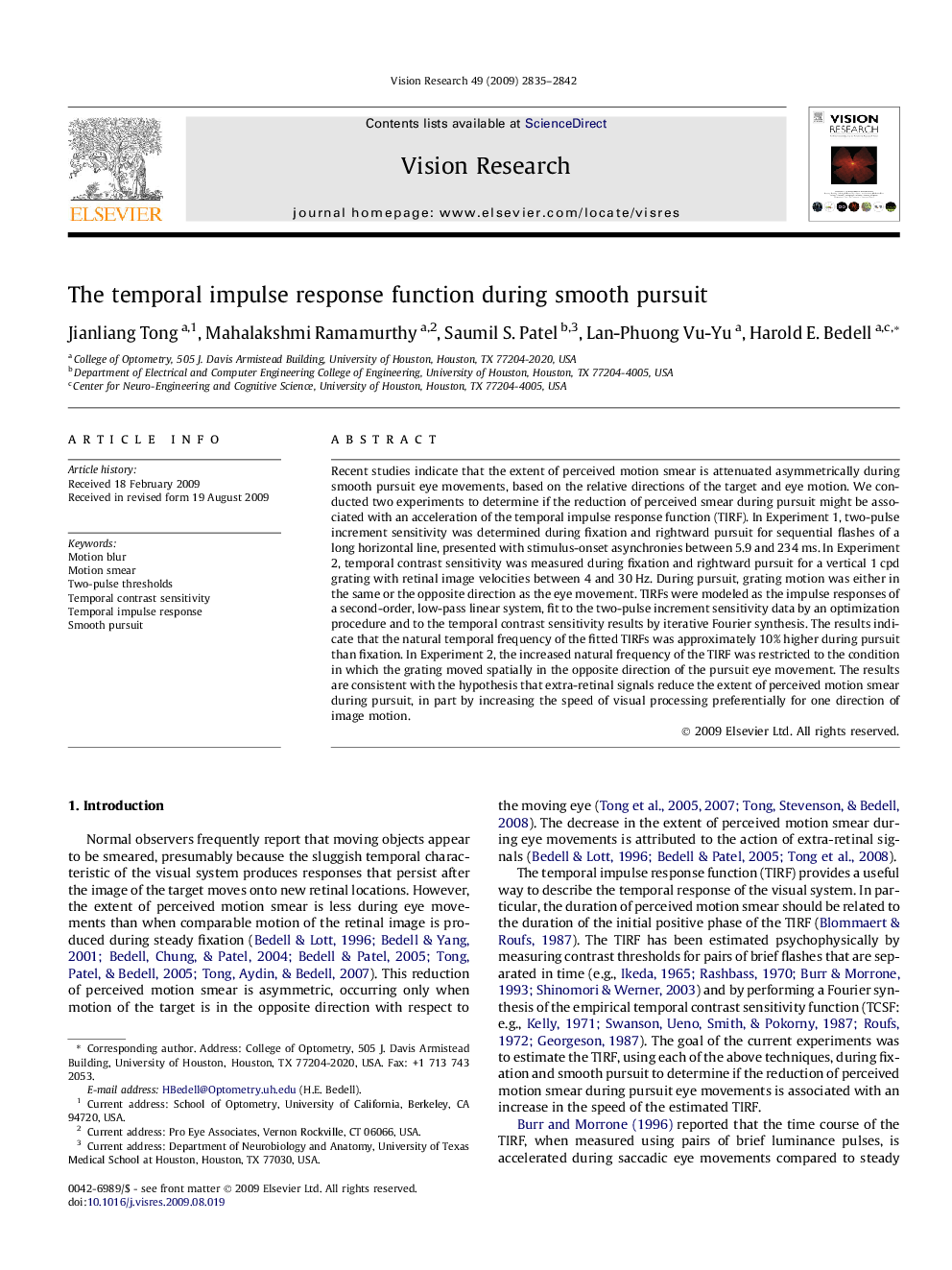| Article ID | Journal | Published Year | Pages | File Type |
|---|---|---|---|---|
| 4034981 | Vision Research | 2009 | 8 Pages |
Recent studies indicate that the extent of perceived motion smear is attenuated asymmetrically during smooth pursuit eye movements, based on the relative directions of the target and eye motion. We conducted two experiments to determine if the reduction of perceived smear during pursuit might be associated with an acceleration of the temporal impulse response function (TIRF). In Experiment 1, two-pulse increment sensitivity was determined during fixation and rightward pursuit for sequential flashes of a long horizontal line, presented with stimulus-onset asynchronies between 5.9 and 234 ms. In Experiment 2, temporal contrast sensitivity was measured during fixation and rightward pursuit for a vertical 1 cpd grating with retinal image velocities between 4 and 30 Hz. During pursuit, grating motion was either in the same or the opposite direction as the eye movement. TIRFs were modeled as the impulse responses of a second-order, low-pass linear system, fit to the two-pulse increment sensitivity data by an optimization procedure and to the temporal contrast sensitivity results by iterative Fourier synthesis. The results indicate that the natural temporal frequency of the fitted TIRFs was approximately 10% higher during pursuit than fixation. In Experiment 2, the increased natural frequency of the TIRF was restricted to the condition in which the grating moved spatially in the opposite direction of the pursuit eye movement. The results are consistent with the hypothesis that extra-retinal signals reduce the extent of perceived motion smear during pursuit, in part by increasing the speed of visual processing preferentially for one direction of image motion.
